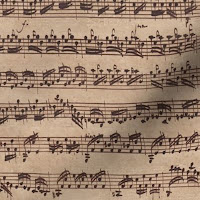How to Practice Scales
I'm sure everyone has received advice that boils down to "practice scales" at one point or another, but this advice is rarely accompanied with how exactly to do this. While scales are certainly important in developing musicianship, simply practicing them by playing the notes in order up and down does little to develop one's musicality. If we want to make music, we need to practice making music, and practicing scales in this way is not very musical. If you've ever asked yourself or someone else "why do my solos sound like I'm playing scales", the answer to this question is probably "because you practice scales". It's like the saying "you are what you eat", only in this context it's "you sound like what you practice".
Scales are simply a selection of notes that work well together in a particular context. They are not inherently musical, but rather it's the way you choose to use the notes of a scale that makes it musical. When you are learning a scale for the first time, it's beneficial to play the notes in order up and down to get them under your fingers, but once it is learned there's arguably little use in practicing them this way other than as a simple finger exercise. In this lesson we will learn some ways to practice scales that are a bit more applicable to making real music.
All of the examples here will be shown in one key and in only one position. In order to get the most out of practicing these patterns they should be practiced in all keys and positions. One thing we can do is to play the scale in intervals such as 3rds, 4ths, 5ths, etc. Let's apply 3rds to the A Major scale. Here it is ascending:
Here is the A Major scale ascending in 4ths:
Here it is descending in 4ths:
You can take this idea and play the scale in 5ths, 6ths, and 7ths as well. Another useful way to practice scales is to play the arpeggios of all the chords from the scale within each shape as well. For example, this exercise goes through all of the basic triads within the A Major scale, while staying in one position:
This example is similar to the previous one, but extends all the basic chords to the 7th:
You can do this for 9ths, 11ths, or any other type of chord derived from the scale as well.
One last method I would like to go over is practicing scales using sequences. Using this method, you'll pick any number of notes in sequential order and keep moving them up or down by one scale degree every time. For example, here's a three-note sequence played ascending through the A Major scale:
Here is a four-note sequence played descending through the A Major scale:
When practicing all these different variations, it's important to change them around, mix them up, etc. The point is to get as many sounds from a scale as possible into your head so that you're prepared to deal with them in real music when they come up. For example, you could take the triad scale exercise from before and alternate up one, down the next:
Everything here was shown only in one key, and only within one position on the guitar. It's important to take these examples to other keys and practice them in other positions as well in order to become proficient on your instrument. Next time you sit down to practice scales, consider trying one or more of these variations instead.
If you have any questions or suggestions leave a comment below!










Comments
Post a Comment
Feel free to ask questions or start a discussion, or leave a suggestion for future articles! Please keep it civil.